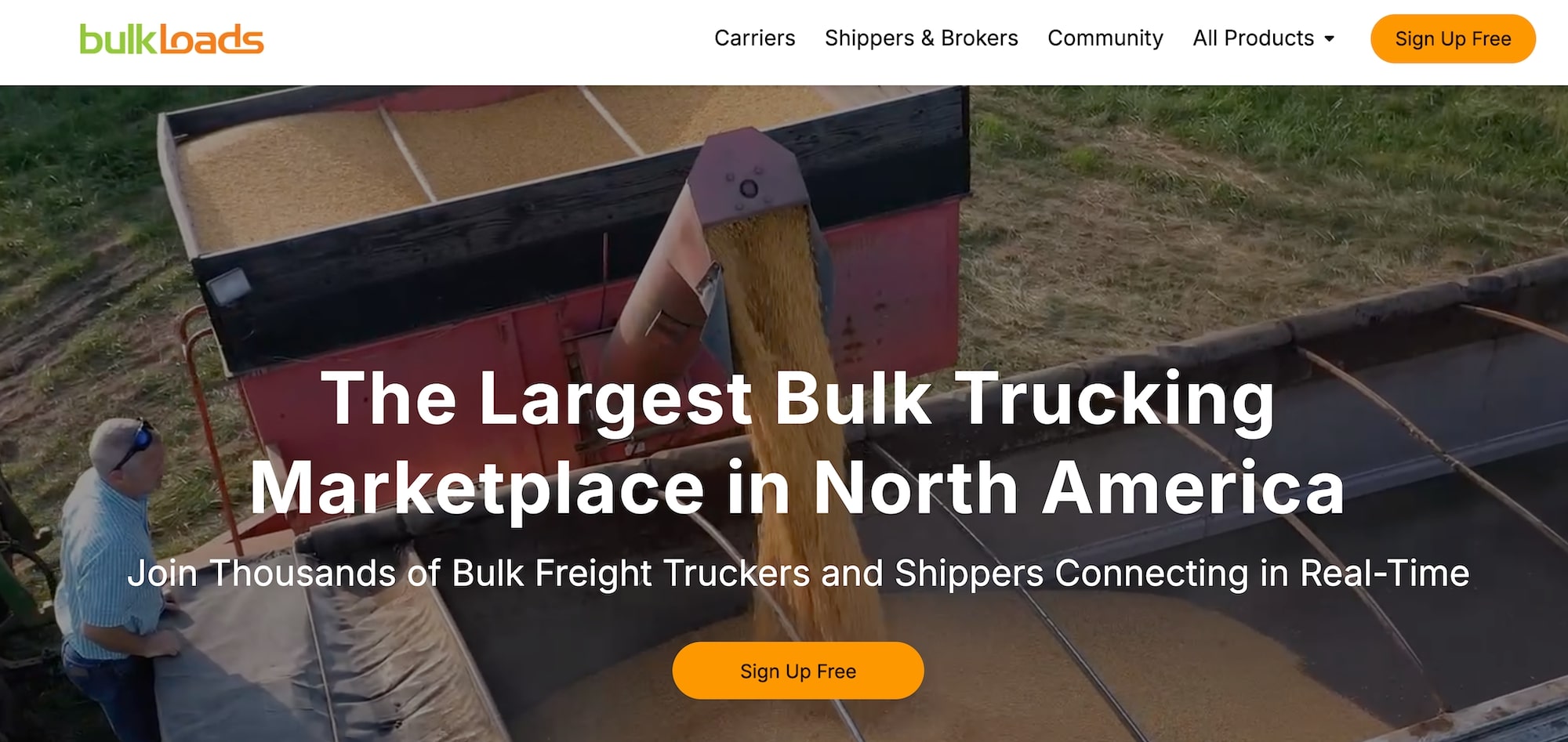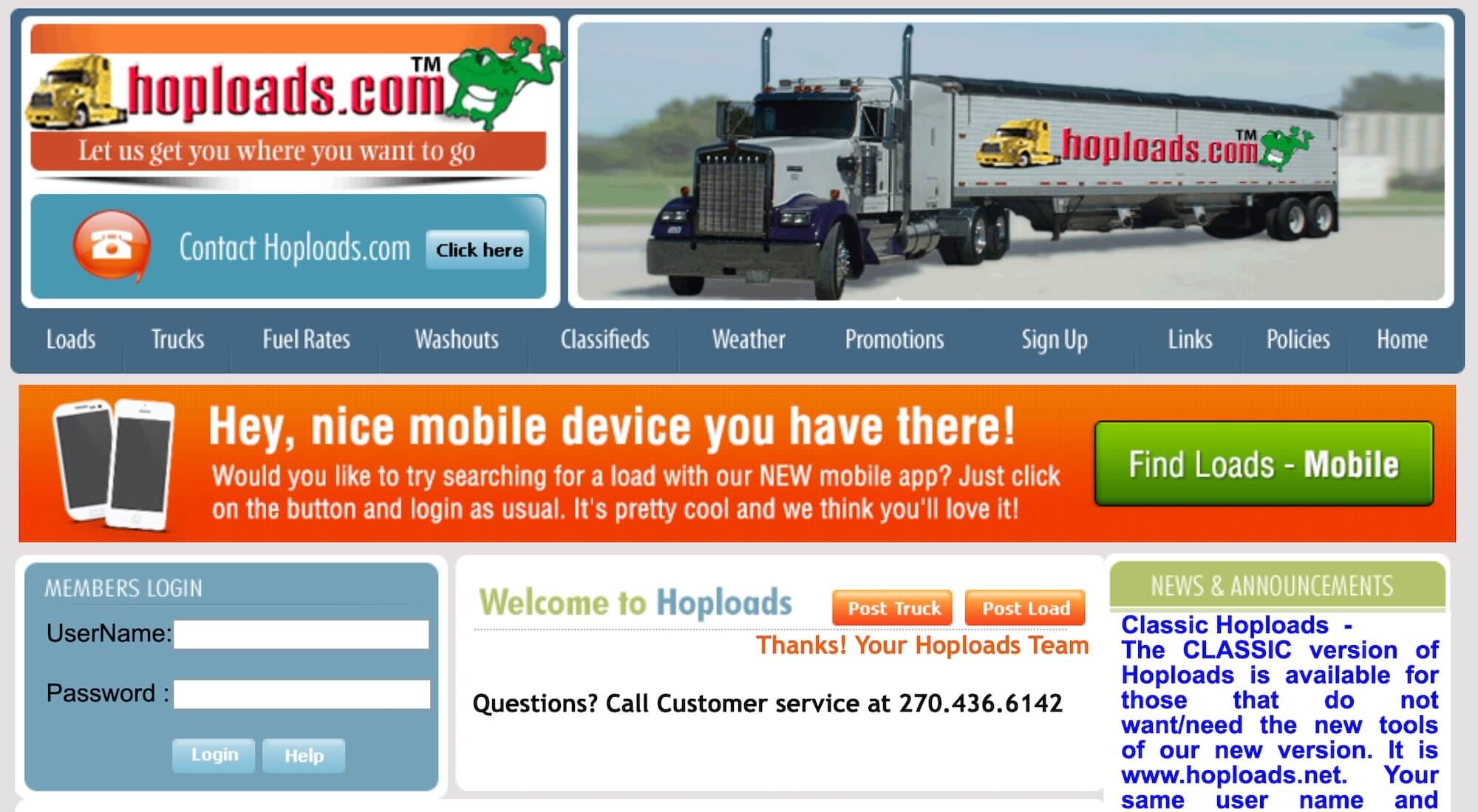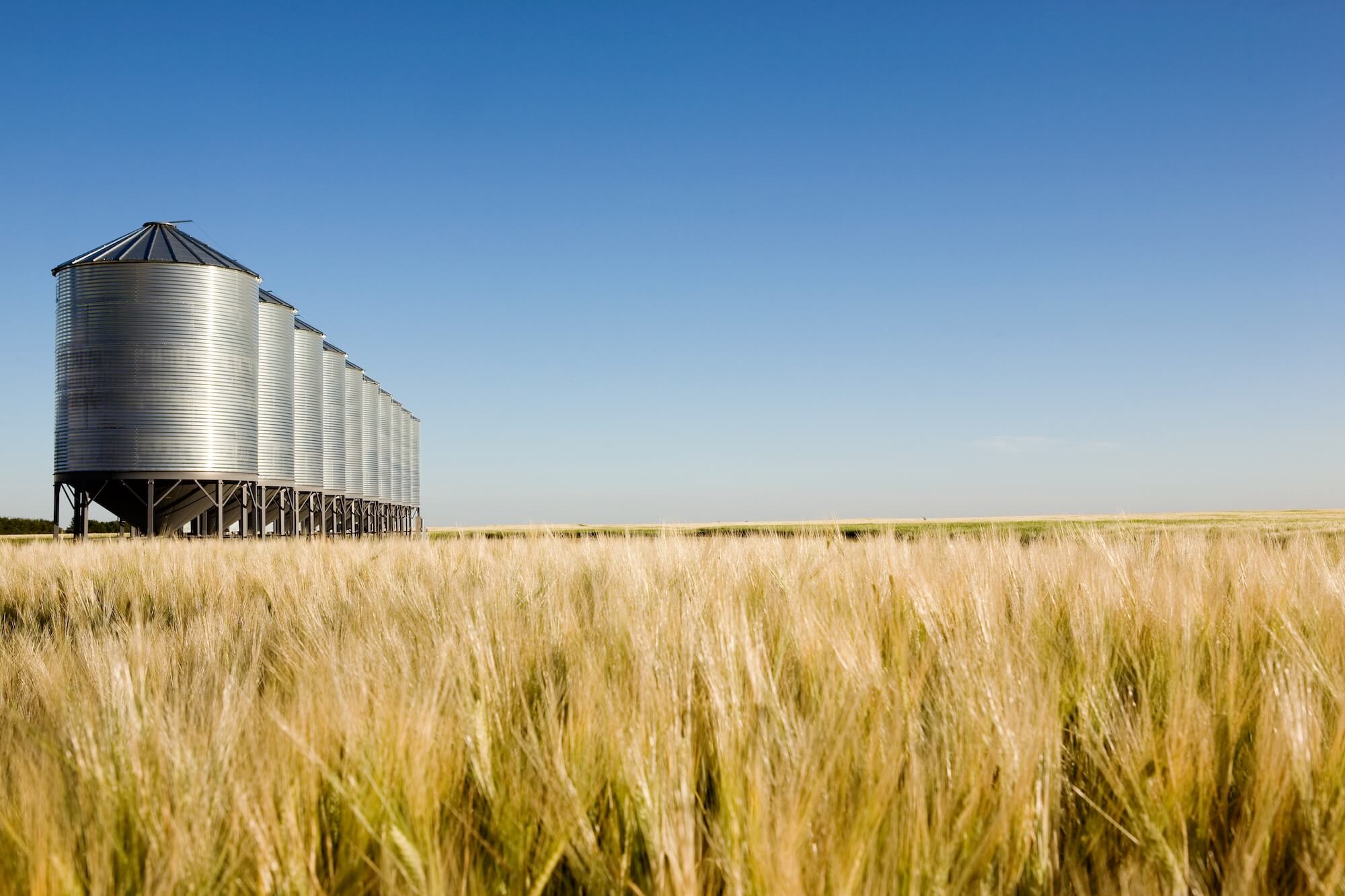If you’re running a hopper bottom fleet, dispatching during harvest means coordinating dozens of short trips per truck, managing elevator receiving hours, and keeping drivers moving between farms, co-ops, and delivery points without delays.
As an alternative, some hopper fleets turn to outsourced dispatch services, but those often create new problems. External dispatchers rarely understand the nuances of hopper bottom hauling, resulting in inefficient load scheduling, increased costs, and reduced visibility into their own operations.
That’s why dedicated hopper bottom dispatch software is essential. To solve the day-to-day challenges of grain and seed hauling, you need a tool that helps you:
- Schedule high volumes of loads faster without repetitive data entry or switching back and forth between spreadsheets.
- Assign drivers to the right loads for deliveries quickly from one central screen.
- Share clear instructions instantly so drivers aren’t relying on calls or texts.
- Track trucks and loads in real time to adjust schedules on the go when elevators are backed up or routes change.
- Keep dispatchers, drivers, and the back office connected through one system.
In this article, we explain why Toro TMS is the best software for hopper bottom dispatch. Then, we review a few alternative platforms (and load boards) built for commodity carriers.
Book a demo to see Toro in action and discover how hopper fleets can dispatch more efficiently.
Toro TMS: The best hopper bottom dispatch software for bulk hauling

Toro TMS is built for bulk commodity carriers, including hopper bottom fleets, that manage a high volume of short, repeat loads per truck each day. The system is designed to handle the unique demands of hauling grain, seed, fertilizer, aggregates, and other bulk materials.
Our system streamlines dispatch, eliminates paper scale tickets, and keeps drivers, dispatchers, and the back office connected in real time. All of this, while giving you the tools you need to manage the unique challenges of bulk hauling during busy harvest seasons.
Toro helps hopper bottom trucking fleets by:
- Dispatching repeat jobs quickly with pre-built templates tailored to farm-to-elevator hauls.
- Assigning loads, monitoring drivers, and tracking delivery progress in one central screen.
- Collecting scale tickets digitally from drivers without app logins or physical paperwork.
- Automating invoices and driver pay using completed load and ticket data.
- Syncing directly with QuickBooks to eliminate manual accounting tasks.
- Delivering reports that show profitability, reduce empty miles, and improve fleet utilization.
Toro is built specifically to be an easy-to-use trucking software, so non-technical teams have no issues implementing it into their workflows.
And while Toro is a perfect fit for hopper bottom fleets, it’s not limited to grain or seed hauling. The system is also used by bulk carriers specializing in aggregates, hazardous chemicals, agricultural commodities, and even ready-mix concrete, giving you one platform that suits your specific operational needs.
Read more: Livestock transportation management software: how to better transport live cargo
Automate dispatch with pre-built load templates for high-volume recurring hauls
In hopper bottom operations, dispatchers often handle dozens of short trips a day between farms, co-ops, and elevators.
Manually reentering the same farm location, elevator name, commodity type, and rate structure for every single load wastes valuable time and increases the chance of errors. One wrong detail can result in trucks showing up at the wrong elevator, delayed unloads, or settlements that don’t match tickets.
Toro TMS solves this by making it quick and easy to dispatch recurring hopper hauls in bulk, all from a single dashboard. Dispatchers can create pre-filled templates for repeat jobs, storing key details like customer info, origin, destination, commodity type, trailer requirements, and driver pay rates.
When done correctly, it takes just a few clicks to assign the job when a new order comes in. There’s no need to retype addresses, tonnage, or commodity details.

With Toro’s dispatch dashboard, you can:
- Use drag-and-drop scheduling to assign loads in seconds. View all trucks, drivers, and scheduled jobs on one screen, then drag a load to a driver’s timeline to instantly assign it.
- Pre-load commodity-specific details, such as bushels, tons, pickup/delivery points, and special instructions, so drivers have everything they need up front.
- Quickly replicate repeat jobs. Instead of retyping the same origin/destination dozens of times, Toro lets you duplicate and assign recurring loads in just a few clicks. This is particularly useful during peak times, such as harvest.
- Match trucks and trailers to jobs based on capacity and availability, ensuring the right equipment is always assigned to the right run.
- Track active loads in real time to see when a driver is loading at the farm, in transit, or unloading at the elevator. These load management tools give dispatchers the visibility they need to reroute trucks before bottlenecks pile up at delivery sites.
Toro’s dispatch system is built to be easy for dispatchers to adopt, so once they actually use it, loads go out faster, drivers get the right details for deliveries, and the back office isn’t stuck chasing down paperwork just to bill customers or pay drivers.
Read more: How to choose a dispatch software for trucking your teams will actually use
Allow drivers to receive load instructions and upload documents digitally
Like most trucking companies, hopper bottom carriers need to collect key documentation and scale tickets to handle invoices, billing, and driver settlements.
Every trip between a farm and an elevator generates a ticket with weights, times, and reference numbers. When those slips stay in the cab until the end of the week (or get lost entirely), dispatchers lose visibility on key details, drivers wait longer to get paid, and the back office can’t invoice customers on time.
Toro TMS addresses this problem by making it simple for drivers to receive load instructions and submit order documentation directly from their phone without needing to download an app or remember an online portal login.
When a dispatcher assigns a load, the driver receives a text message with all the info they need, including:
- Where to load and unload: farm, bin site, elevator, or co-op location
- What commodity they’re hauling: corn, soybeans, wheat, seed, or fertilizer
- How much they’re moving: bushels, tons, or truck capacity for the trip
- Who the load is for: customer name, pickup and delivery addresses, load reference numbers
- Any special notes: elevator receiving hours, routing instructions, moisture/weight requirements

The text message also includes a secure link where drivers can snap a quick photo of their scale ticket before they leave the elevator.
Once submitted, the ticket is automatically attached to the correct load record, and Toro scans the document. From there, key details like ticket number or total net weight are extracted instantly and synced to dispatch and back-office workflows.
This means dispatchers see confirmation in real-time, while accounting can proceed with billing and driver settlements without requiring any additional manual data entry.
Read more: Trucking ticket management software: How to better manage your paper tickets

Invoice customers and pay drivers faster without repeat data entry
The typical invoicing and payroll process for hopper bottom fleets is slow for two reasons. First, there’s the sheer volume of loads per day. During harvest, drivers may run six or more short hauls, each with its own ticket and pay calculation, putting constant pressure on dispatch and back-office teams to keep up.
Second, all the paperwork drivers collect has to be scanned and manually reentered, which tends to prolong billing cycles and payroll calculations.
As a result, customers are invoiced days or even weeks later than they should be, and drivers wait far too long for their settlements to be processed.
Toro TMS eliminates these bottlenecks by capturing ticket data once at dispatch and populating it downstream automatically.
When a ticket is uploaded, all key details (such as customer info, weights, rates, and pay structures) sync instantly to dispatch, accounting, and payroll. There’s no need for back-office teams to chase down paper tickets, reducing double entry and delays.

Toro automatically builds invoices with the correct line items, such as:
- Commodity hauled (corn, soybeans, wheat, fertilizer, aggregates)
- Quantity moved (bushels, tons, or full truck capacity)
- Rate type (per bushel, ton, or load)
- Fuel surcharges, detention, or elevator wait-time fees
- Customer-specific terms or hauling minimums
Invoices can be created in batches, exported as PDFs, or synced directly to QuickBooks to streamline accounting.
Toro also creates driver profiles to store each driver’s pay structure automatically (whether they’re paid by bushel, ton, load, or revenue share). As soon as a ticket is matched to a load, earnings are calculated instantly.

Dispatchers can also factor in bonuses, deductions, or reimbursements. Once calculated, Toro generates payroll-ready summaries for ADP, QuickBooks Payroll, or your preferred system, so settlements are processed on time.
Read more: Trucking accounting software: 5 best options to streamline back-office tasks
Find actionable insights into your business with advanced reporting tools

Hopper bottom operations run on tight margins, and without clear reporting, it’s hard to know which customers, routes, or drivers are actually profitable.
Spreadsheets and outsourced dispatch or transportation services rarely give you the visibility you need, meaning inefficiencies like long elevator wait times, empty backhauls, or underperforming pay structures often go unnoticed.
Toro TMS offers real-time reporting and analytics too, so you can:
- Analyze profitability by customer, route, or commodity type: Break down revenue and expenses across all loads. See which customers or elevator runs deliver the highest margins, and which lanes are eating into profits.
- Track driver performance and utilization: Evaluate driver output by tonnage hauled, loads completed, or settlement type. Spot where idle time at elevators is reducing efficiency.
- Compare pay structures: Assess how per-bushel, per-ton, or per-load pay models impact costs, so you can align settlements with performance while keeping payroll sustainable.
- Monitor fleet activity at scale: During harvest surges, track total loads moved, elevator wait times, and tonnage delivered in one view so you can make adjustments on the fly and keep trucks moving.
Book a free demo to learn how Toro cuts paperwork, streamlines dispatch, and helps your hopper fleet grow.
4 alternative hopper bottom dispatch software options
1. Axon Software

Axon Software is a trucking management system for specialized fleets, including fleets that run hopper bottom trailers. Axon offers a full suite of features, including accounting, payroll, and fleet tracking in one platform.
Key Axon Software features include:
- Centralized dispatch screen with color-coded load boards and truck driver assignments
- Built-in payroll, settlements, and invoicing modules
- Ticket management for bulk and dump hauls
- Equipment and maintenance tracking for trailers and tractors
- Driver app for paperwork submission and real-time updates
Read more: Chemical transport software: 5 tools for hazmat & bulk liquid carriers
2. Dump Truck Dispatcher

Dump Truck Dispatcher is designed for aggregate, sand, gravel, and other bulk haulers, but many hopper bottom carriers also use it because of the similar high-frequency, short-haul nature of their work.
The platform helps simplify scheduling and ticket management for fleets that run multiple repeat trips each day.
Key features include:
- Drag-and-drop dispatch board to assign and sequence loads
- Digital ticketing with mobile driver uploads
- Customer invoicing and driver pay calculation
- Real-time GPS tracking of drivers and equipment
- Custom reporting on revenue, costs, and fleet utilization
Read more: Dump truck software: 5 top choices for specialist software
3. BulkLoads

BulkLoads is an online marketplace for bulk commodities, including grain, feed, fertilizer, and
aggregates. While it isn’t a typical dispatch platform, many hopper bottom carriers use BulkLoads to keep their trucks full by finding spot freight.
Unlike most general load boards, BulkLoads lets you filter by trailer type, including hoppers, end dump trailers, flatbeds, belt trailers, and pneumatics.
Key features include:
- Search filters for hopper bottom loads across North America
- Digital tools for invoicing, factoring, and insurance
- Marketplace to connect carriers, brokers, and shippers in the bulk sector
- Community forums and industry insights tailored to bulk haulers
- Mobile app for drivers to find and bid on loads in real time
4. Hoploads

Hoploads is a dedicated hopper bottom freight load board. Carriers hauling grain, seed, and feed use it to find daily loads from brokers and shippers who specialize in this niche.
While it doesn’t entirely replace your dispatch management software, Hoploads gives fleets a steady source of work, especially during harvest surges. It also helps freight brokers connect with carriers who specialize in hauling dry bulk commodities.
Key features include:
- Exclusive focus on hopper bottom freight and carriers
- Daily updated load postings from brokers and shippers
- Search tools to filter by region, commodity, or trip length
- Subscription-based model for carriers to access available freight
- Simple interface tailored to the hopper bottom industry
Keep every hopper bottom load moving with Toro TMS
Hopper bottom fleets need a dispatch system built for the fast-paced, repetitive nature of bulk hauling, rather than a generic TMS for trucking or limited load board.
Toro TMS gives commodity carriers the tools to stay efficient and profitable, including:
- Simplified load scheduling and dispatching with templates for recurring farm-to-elevator runs.
- Real-time visibility into trucks and drivers, so you can adjust when elevators are backed up.
- Digital scale ticket uploads that cut down on paperwork and prevent delays in billing or settlements.
- Automated invoicing and driver pay, calculated directly from completed loads and ticket data.
Ready to see how Toro TMS can make hopper bottom dispatch easier for your team? Book a free demo today.
.png)

